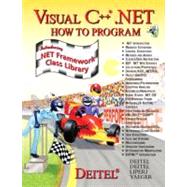
| Introduction to .NET and Visual C++ .NET | |
| Introduction | |
| History of the Internet and World Wide Web | |
| World Wide Web Consortium (W3C) | |
| Extensible Markup Language (XML) | |
| Key Software Trend: Object Technology | |
| Introduction to Microsoft .NET | |
| Visual C++ .NET | |
| .NET Framework and the Common Language Runtime | |
| Web Resources | |
| Introduction to the Visual Studio .NET IDE | |
| Introduction | |
| Visual Studio .NET Integrated Development Environment (IDE) Overview | |
| Menu Bar and Toolbar | |
| Visual Studio .NET Windows | |
| Using Help | |
| Simple Program: Displaying Text | |
| Simple Program: Displaying Text and an Image | |
| Introduction to Visual C++ .NET Programming | |
| Introduction | |
| Simple Program: Printing a Line of Text | |
| Another Simple Program: Adding Integers | |
| Memory Concepts | |
| Arithmetic | |
| Decision Making: Equality and Relational Operators | |
| Control Statements | |
| Introduction | |
| Algorithms | |
| Pseudocode | |
| Control Structures | |
| if Selection Statement | |
| If...else Selection Statement | |
| While Repetition Statement | |
| Formulating Algorithms | |
| (Counter-Controlled Repetition) | |
| Formulating Algorithms with Top-Down, Stepwise Refinement | |
| (Sentinel-Controlled Repetition) | |
| Formulating Algorithms with Top-Down, Stepwise Refinement | |
| (Nested Control Structures) | |
| Assignment Operators | |
| Increment and Decrement Operators | |
| Control Statements | |
| Introduction | |
| Essentials of Counter-Controlled Repetition | |
| For Repetition Statement | |
| Examples Using the for Statement | |
| Switch Multiple-Selection Statement | |
| Do...while Repetition Statement | |
| Break and continue Statements | |
| Logical Operators | |
| Structured-Programming Summary | |
| Functions | |
| Introduction | |
| Functions and Methods in Managed Extensions for C++ | |
| Math Class Methods | |
| Functions | |
| Function Definitions | |
| Argument Promotion | |
| Namespaces in Managed Extensions for C++ | |
| Value Types and Reference Types | |
| Pointers and References | |
| Passing Arguments: Pass-by-Value vs. Pass-by-Reference | |
| Default Arguments | |
| Random-Number Generation | |
| Example: Game of Chance | |
| Duration of Variables | |
| Scope Rules | |
| Recursion | |
| Example Using Recursion: The Fibonacci Series | |
| Recursion vs. Iteration | |
| Function Overloading | |
| Arrays | |
| Introduction | |
| Arrays | |
| Declaring and Allocating Arrays | |
| Examples Using Arrays | |
| Passing Arrays to Functions | |
| Sorting Arrays | |
| Searching Arrays: Linear Search and Binary Search | |
| Multidimensional Arrays | |
| Object-Based Programming | |
| Introduction | |
| Implementing a Time Abstract Data Type with a Class | |
| Class Scope | |
| Controlling Access to Members | |
| Initializing Class Objects: Constructors | |
| Using Overloaded Constructors | |
| Properties | |
| Composition: Object Pointers as Data Members of Other Classes | |
| Using the this Pointer | |
| Garbage Collection | |
| Static Class Members | |
| Const Keyword and Read-Only Properties | |
| Indexed Properties | |
| Data Abstraction and Information Hiding | |
| Software Reusability | |
| Namespaces and Assemblies | |
| Class View | |
| Object-Oriented Programming: Inheritance | |
| Introduction | |
| Base Classes and Derived Classes | |
| Protected Members | |
| Relationship Between Base Classes and Derived Classes | |
| Example: Three-Level Inheritance Hierarchy | |
| Constructors and Destructors in Derived Classes | |
| Software Engineering with Inheritance | |
| Object-Oriented Programming: Polymorphism | |
| Introduction | |
| Derived-Class-Object to Base-Class-Object Conversion | |
| Type Fields and switch Statements | |
| Polymorphism Examples | |
| Abstract Classes | |
| Case Study: Inheriting Interface and Implementation | |
| Sealed Classes and Methods | |
| Case Study: Payroll System Using Polymorphism | |
| Case Study: Creating and Using Interfaces | |
| Delegates | |
| Operator Overloading | |
| Exception Handling | |
| Introduction | |
| Exception Handling Overview | |
| Example: Divide By Zero Exception | |
| .NET Exception Hierarchy | |
| Finally Block | |
| Exception Properties | |
| Programmer-Defined Exception Classes | |
| Graphical User Interface Concepts: Part 1 | |
| Introduction | |
| Windows Forms | |
| Event-Handling Model | |
| Control Properties and Layout | |
| Labels, TextBoxes and Button | |
| Table of Contents provided by Publisher. All Rights Reserved. |
The New copy of this book will include any supplemental materials advertised. Please check the title of the book to determine if it should include any access cards, study guides, lab manuals, CDs, etc.
The Used, Rental and eBook copies of this book are not guaranteed to include any supplemental materials. Typically, only the book itself is included. This is true even if the title states it includes any access cards, study guides, lab manuals, CDs, etc.